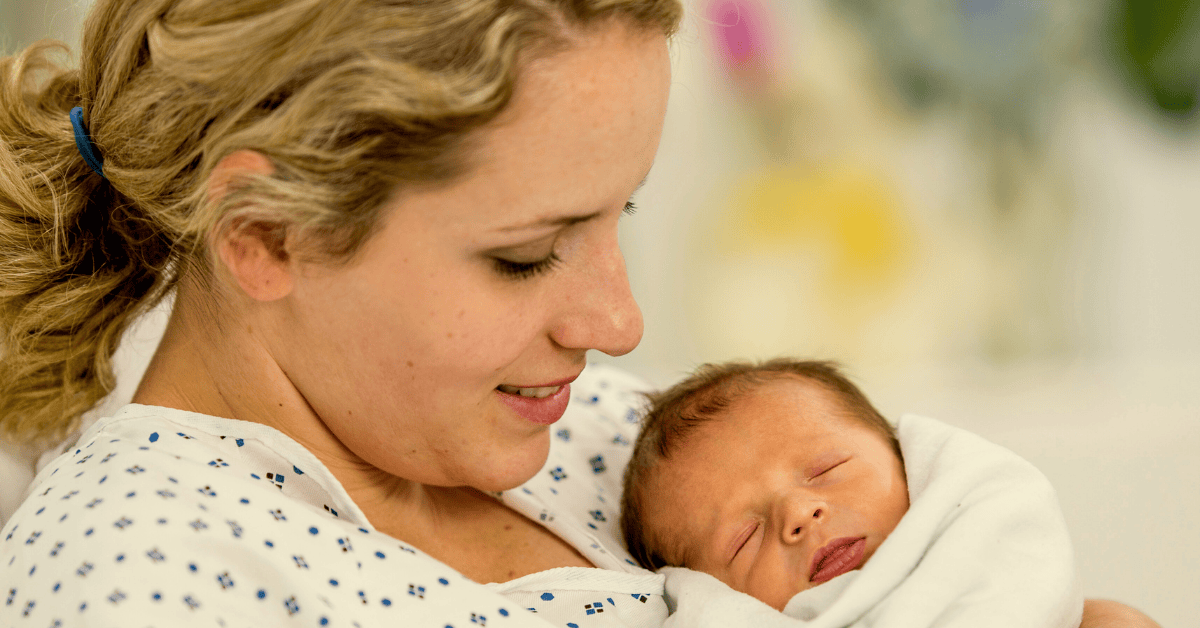
When I became a new mom, my baby struggled to latch, and by the third day, started to look more yellow. Between exhaustion, learning how to breastfeed, and worrying that something was wrong, I felt overwhelmed and like I was failing my newborn. My pediatrician quickly reassured me: newborn jaundice is common, temporary, and treatable.
What is newborn jaundice?
Jaundice (hyperbilirubinemia) is the yellow coloring of a baby’s skin and eyes caused by a build-up of bilirubin, a substance produced when red blood cells break down.1 About 60% of full-term babies develop jaundice in their first week of life.2
Why does it happen?
Before birth, babies make extra red blood cells that are unique to the fetus, which allow them to live in the lower-oxygen environment of the womb. After birth, those extra cells break down. Also, a newborn’s liver is still maturing and takes time to process bilirubin, so levels rise temporarily.3 This usually peaks between day 3–5 and improves by 2 weeks of age.4
What babies are most likely to develop jaundice?
Certain conditions increase the likelihood of babies developing jaundice and should be closely monitored by your doctor. A few factors that increase the chance of jaundice are:
- Premature births: Babies born prematurely will generally have more jaundice as their livers are underdeveloped and unable to process the bilirubin.
- High weight for gestational age: Babies born with a weight that is higher than expected for their age will have higher levels of red blood cells and will make more bilirubin.
- Excessive bruising or swelling after birth: These conditions are due to blood vessel damage, and increase the risk of the baby developing jaundice as this blood from the bruising is broken down, creating more bilirubin.
- Blood type incompatibility: In rare cases, jaundice can be associated with the mother and baby having different blood types (i.e., the mother is type O and the baby is type A or B blood, OR if one has Rh (Rhesus) positive versus Rh negative blood). When this occurs, a mother’s antibodies from their immune system have crossed over into the baby’s bloodstream and breaks down their red blood cells, releasing bilirubin.5
How do doctors check for jaundice?
- Visual exam – Yellowing typically appears first on the face and eyes, then moves down the body if it worsens.6
- Bilirubin testing – Levels can be measured with:
- A quick skin scan (transcutaneous bilirubin test).
- A small blood sample from the baby’s heel (serum bilirubin). This is the most accurate.
When does jaundice need treatment?
Most newborns just need monitoring and frequent feeding. However, if bilirubin levels rise quickly or reach high levels, treatment7 may be recommended:
- Phototherapy (light therapy): Special blue lights help the baby’s body break down bilirubin through the skin. This can be done at home with a light blanket provided by your doctor or in the hospital under overhead lights. Babies wear an eye shield for protection.
- Rare treatments: In very rare cases, particularly in premature babies, more medical treatment is needed, such as additional lab testing or visits with a specialist.
What can parents do at home?
The best “treatment” for mild jaundice is feeding and pooping—this helps remove bilirubin from the body.
- Breastfed babies: 8–12 feeds per day (every 2–3 hours).
- Formula-fed babies: 1–2 ounces every 2–3 hours in the first week.
By day 5, babies are usually more alert, feeding better, and beginning to gain weight again.
When to call your doctor
Contact your pediatrician right away if your baby:
- Looks more yellow, especially below the chest.
- Is hard to wake, too sleepy to feed, or very irritable.
- Has fewer wet or dirty diapers than expected.
- Is not gaining weight by the end of the second week of life.
- Has a fever or abnormal temperature.
Most newborn jaundice is a normal part of adjusting to life outside the womb. With monitoring, feeding, and—if needed—light therapy, babies do well. Remember, your main goals are simple: feed your baby, watch their color, and don’t hesitate to call your pediatrician with concerns.
You’ve got this, parents—and your care team is here to support you every step of the way!
Sources:
1. Wong, B. A., Ronald, & Bhutani, V. K., MD, FAAP. (2025, September 16). Unconjugated hyperbilirubinemia in neonates: Etiology and pathogenesis. UpToDate. https://www.uptodate.com/contents/unconjugated-hyperbilirubinemia-in-neonates-etiology-and-pathogenesis?search=newborn%20jaundice&source=search_result&selec
2. Clements, D. (n.d.). Newborn jaundice. Duke Health. https://www.dukehealth.org/blog/newborn-jaundice
3. Pellegrino, C., Stone, E. F., Valentini, C. G., & Teofili, L. (2024). Fetal red blood cells: A comprehensive review of biological properties and implications for neonatal transfusion. Cells, 13(22), 1843. https://doi.org/10.3390/cells13221843
4. McCarthy, C. (2022, November 2). New guidelines on newborn jaundice: What parents need to know. Harvard Health Publishing. https://www.health.harvard.edu/blog/newborn-jaundice-what-parents-need-to-know-2021020421886
5. Kemper, A. R., Newman, T. B., Slaughter, J. L., Maisels, M. J., Watchko, J. F., Downs, S. M., … & Russell, T. L. (2022). Clinical practice guideline revision: Management of hyperbilirubinemia in the newborn infant 35 or more weeks of gestation. Pediatrics, 150(3), e2022058859. https://doi.org/10.1542/peds.2022-058859
6. Preud'Homme, D. L. (2006, August). Neonatal jaundice: ACG. American College of Gastroenterology. https://gi.org/topics/neonatal-jaundice/
7. Wong, R. J., & Bhutani, V. K., MD, FAAP. (n.d.). Unconjugated hyperbilirubinemia in term and late preterm newborns: Initial management. UpToDate. https://www.uptodate.com/contents/unconjugated-hyperbilirubinemia-in-neonates-etiology-and-pathogenesis?search=newborn%20jaundice&source=search_result&selec#H710863534